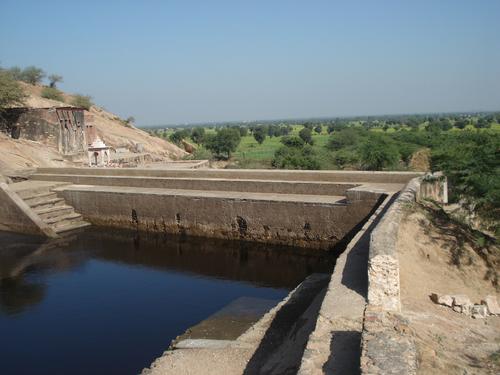Cultivated reservoirs / tanks
Cultivated reservoirs / tanks are above ground earthen water retention structures. Tanks are constructed on gentile slopes (1 – 10%) by excavating soil and/or building bunds (reservoirs). In this system collected water is either directed from the tank to lower fields or into a below ground tank or shallow well for irrigation (C:A ratio 10:1 – 100:1). When the water of the reservoir is used, the reservoir itself is cropped on soil residual moisture. This system is suitable for areas with 150 – 600 mm annual rainfall. It is well known as khadin and ahar in India and Sri Lanka and called gawan in Somalia, khuskaba in Pakistan or teras in Sudan. In India at the end of the monsoon the tank is emptied of the remaining water by a spillway and sluice gates to cultivate wheat and chickpeas with the remaining moisture. Ahars are often built in series. A major limitation is the siltation of the cultivated area in erosion prone areas. (Mekdaschi & Liniger 2013)
